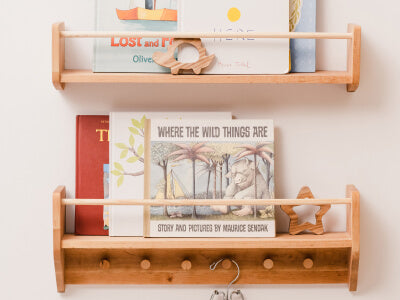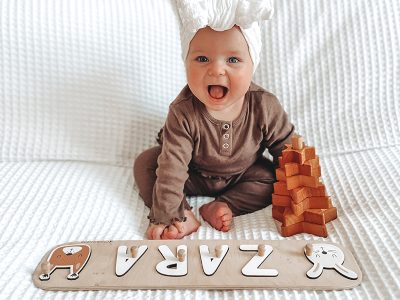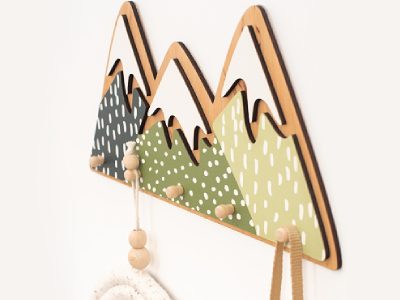Play & Grow: Exploring Types of Play in Child Development
- • 6 min read

- #1 Exploratory Play (2 years and up)
- #2 Physical Play (infancy to adolescence)
- #3 Pretend Play (18 months – 7 years)
- #4 Parallel Play (2 - 3 years)
- #5 Associative Play (3 - 4 years)
- #6 Cooperative Play (4 years and up)
- #7 Creative Play (2 years and up)
- #8 Structured Play (3 years and up)
- #9 Social Play (3 years and up)
- #10 Onlooker Play (2 – 3 years)
- Be Supportive!
Why is play important? According to the research, “How Much Do We Know about the Importance of Play in Child Development?”, through play, munchkins learn a lot about what they will need to know to survive in the future. Many psychologists have different points of view on stages of play in early childhood and its role in a kid’s development. For example, the well-known Sigmund Freud called it “cathartic.” According to the Father and Founder of Psychoanalysis, play enables tots to release negative feelings and make room for positive emotions. While experts tend to define the main 4 types of play in child development, in our ChildUniverse Blog, we’ll discuss more than that and quickly go through play stages in early childhood.
#1 Exploratory Play (2 years and up)
Based on the “The Elaboration of Exploratory Play” study, “the majority of children’s learning (about language, objects, categories social structures in the world) occurs through free rather than forced exploration.” Exploratory play is one of the types of play in child development that involves using smell, taste, and touch senses to explore, learn, process, and comprehend the world around. You can see your rug rat is aware of all the objects next to them and reaching out freely to explore every item. Young children usually play best with stacking blocks, stuffed animals, and other toys with textures. Typically, exploratory play starts with exploring their own bodies before they switch to the environment.
#2 Physical Play (infancy to adolescence)
Physical activities are among the crucial stages of play in child development. From an early age (as your munchkin learns to roll, crawl, and finally walk!), physical fun becomes part of routine. As the next generation grows, physical play gets more complex and intense and does not require parental involvement. First, you see them learning to make some primitive moves, and sooner than you know, your kiddo is testing playground equipment and succeeding in sports or riding bikes. Keep things entertaining! Transform any physical activity into games or fun challenges. Thus, little ones will look forward to it and be encouraged to be active. Better physical health is guaranteed!
#3 Pretend Play (18 months – 7 years)
At what age does a child become able to share and play with others? Probably when they start watching you. They are watching moms and dads and doing as they do (not as they say, ha!). Pretend (dramatic) play comes into the scene as toddlers begin to imitate the behaviors of adults in the house. They start using their imagination to the fullest, and it obviously has no limits. At Child-Universe, we have a lot of accessories that may come in handy for toddlers during dramatic make-believe. Items like kitchen sets help cultivate creativity and develop problem-solving skills. At the same time, kiddies hone communication, language, and empathy as they’re acting out stories with buddies. Something money can’t buy!
#4 Parallel Play (2 - 3 years)
What age does parallel play start? Around 2+ years. Parents wondering, “When do kids start playing together?” should keep in mind that first, toddlers start playing alongside each other; however, you don’t see them interacting directly. Tots are engaged with Montessori baby toys that are typical for this stage, drawing or coloring, building structures, or are engaged in any activities without communicating in any way. The process of socialization is about to start, allowing kids to feel comfortable in the company of other people. Before they dive into the social settings, they learn to self-explore, getting ready for cooperative play.
#5 Associative Play (3 - 4 years)
Taking into account the associative play age, it’s a more advanced stage of social play. Littlies start to interact in the process; however, full cooperation or teamwork toward a common goal is not involved. Fidgets imitate each other’s actions, exchange toys, and even discuss what they’re busy with. These simple rituals let them develop better social and communication skills and get ready for cooperative fun.
#6 Cooperative Play (4 years and up)
When do babies start playing with each other? Well, cooperative play typically occurs when children are around preschool age. According to the researchers of the “Cooperative Play: A Strategy for Increasing Environment Care of the Early Childhood” study, in cooperative activities, littlies are involved in playing activities with their friends. This, in turn, includes working in a team on a common goal. As tots develop their communication skills and become aware of different social roles, this kind of play starts dominating. Whether they’re building a fort, participating in team sports, or dealing together with group challenges, they develop valuable skills like negotiation, leadership, and teamwork (priceless in adulthood!).
#7 Creative Play (2 years and up)

Photo by Dragos Gontariu from Unsplash
Self-expression and imagination go wild through creative routine! Activities like storytelling, art, music, and all possible varieties of imaginative games help kids express their inner selves and support cognitive flexibility. It’s the era of crayons, paints, paper crafts, and making up the funniest songs you have ever heard.
#8 Structured Play (3 years and up)
This stage requires parental involvement. It’s usually well-organized and led by one or more parents. Specific goals, objectives, and rules are also included to help little ones learn how to process, comprehend, and stick to instructions and rules, as well as stay focused on the process. If you were thinking, “When do kids play together?”, you’re welcome to use board games, “Simon Says” rules, and some sports to get toddlers together and encourage them to interact.
#9 Social Play (3 years and up)
As bambinos engage with others, the process is called social play. It allows them to learn about cooperating, sharing, and negotiating. When interacting in group make-believe, team sports, or any other challenges, your fidget builds social and communication skills.
#10 Onlooker Play (2 – 3 years)
This type occurs when young ‘uns watch others engaged in play but do not join it yet. They’re curious about what everyone else do and observe before taking part in the process. For instance, younger toddlers may look at older buddies enjoying games, sports, solving a puzzle, etc., and learn new skills through observing and being curious.
Be Supportive!

Photo by Fernanda Greppe from Unsplash
Parents or caregivers are the key to encouraging the most positive play experiences for their children. We offer some simple tips on how you can support your tot as they pass through various stages of development:
- Provide a safe environment. It must be an inviting and safe place with zero risk of injury and direct access to art supplies, toys, and the rest of accessories they may need.
- Give them freedom. Free or unstructured leisure is excellent for self-awareness and creativity. Now that you know what age do kids play together, encourage tots to engage in any kind of play on their own.
- Join ONLY when needed. Let them know they have space and freedom for independent fun and join only if you know it will enhance their experience.
- Encourage social interactions. Let them glow! Give them space to interact with their peers and enjoy group activities, parties, sports, etc.
- Guide but don’t control. There’s no doubt you’re going to feel tempted to direct your kiddo’s routine, especially when they’re stuck in the middle of the process and need to solve a particular problem. However, your task is to observe and (if needed) guide them gently.
- Take them off screens. Impossible is nothing! While gadgets are an integral part of life and parenting, it’s important to balance active and screen time. Limit screen time to short sessions and prioritize social interactions and physical play that boost both physical and mental health.
- Let their creative juices flow. Creative play is essential for emotional development. Provide them with myriads of opportunities to express their artistic sides through role-playing, drawing, painting, and other activities they’re genuinely interested in.
If you make sure to actively support them at all stages of play development, you will create a safe and rich environment where a confident, healthy, and creative individual can grow. Not only will you create a strong bond between you and the next generation, but you will also help them master skills they’ll need when adulthood kicks in.
























